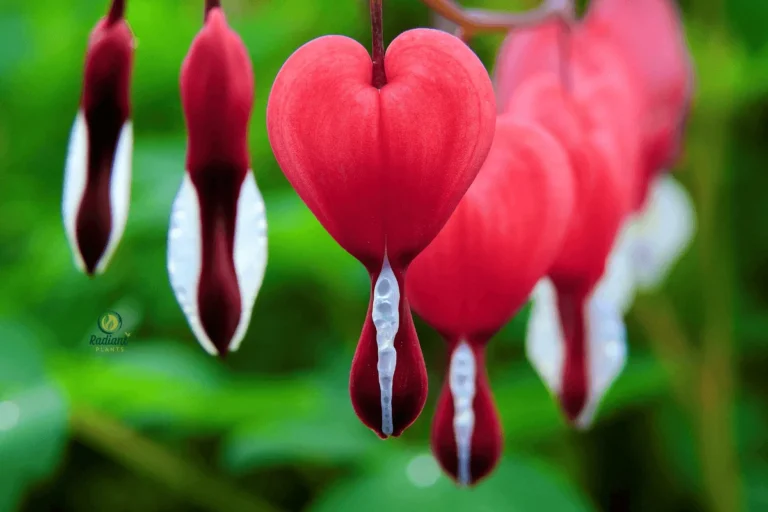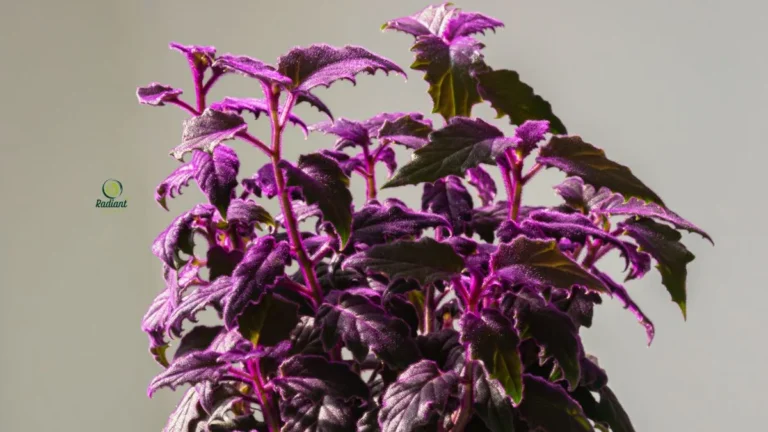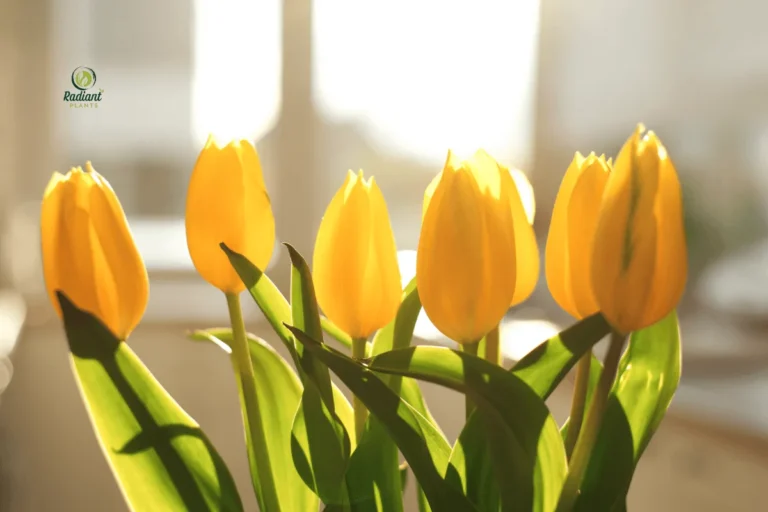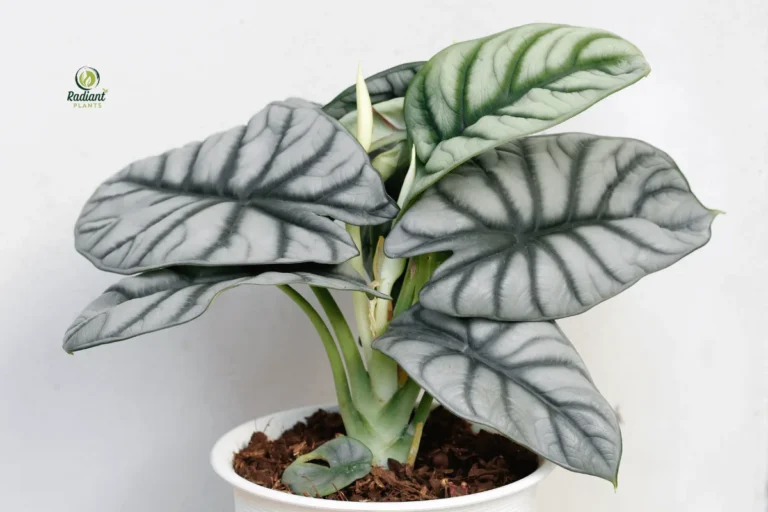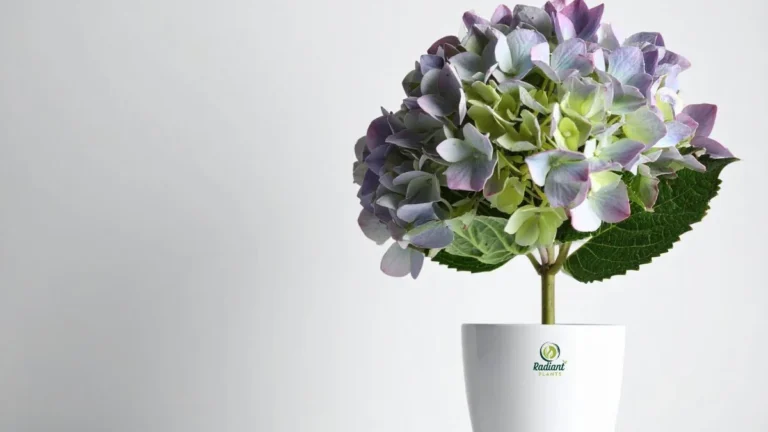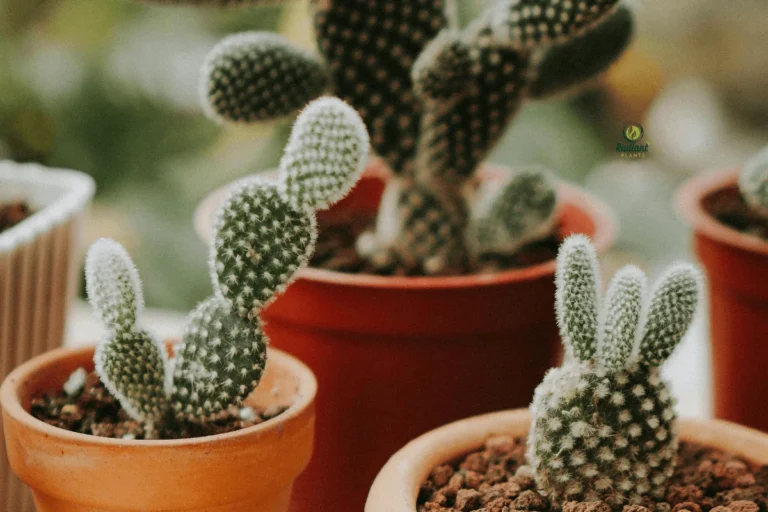Euphorbia obesa Succulent: Care, Propagation, and Growth Tips
Euphorbia obesa, also known as the “Baseball Plant,” is a stunning and unique succulent that has captured the hearts of plant lovers around the world. With its perfectly spherical shape and distinctive green, ribbed appearance, it’s easy to see why this plant is a favorite among both beginners and seasoned gardeners. Native to South Africa, Euphorbia obesa thrives with minimal care, making it an excellent addition to any plant collection.
Whether you’re new to succulents or a seasoned enthusiast, understanding how to properly care for, propagate, and grow Euphorbia obesa is key to maintaining its health and beauty. In this guide, we’ll dive into essential care tips, propagation methods, and growth strategies to help your Euphorbia obesa flourish. Whether you plan to keep it indoors or outdoors, these tips will ensure this fascinating plant remains a vibrant and eye-catching part of your space.
Table of Contents
What is Euphorbia obesa?



Euphorbia obesa, commonly known as the “baseball plant,” is a fascinating and unique succulent that has captured the attention of plant enthusiasts worldwide. Native to the arid regions of South Africa, this plant belongs to the Euphorbiaceae family, a diverse group that includes many other succulents and cacti-like species. Its round, baseball-like appearance makes it one of the most distinctive plants in the succulent family, earning it a spot in many collections and gardens.
Physical Characteristics
- Shape and Size: One of the most striking features of Euphorbia obesa is its spherical, globe-like shape. The plant grows to a height of 6-8 inches (15-20 cm) and spreads out to a similar width, maintaining a neat, rounded form. This compact growth habit makes it an ideal candidate for small spaces or indoor gardens.
- Color: Euphorbia obesa is typically a deep green color, though it may take on a slightly reddish or purple tint when exposed to stressors like intense sunlight or drought. This subtle color change only enhances its visual appeal, making it a stunning addition to any plant collection.
- Surface Features: The surface of the plant is marked by a series of vertical ridges or “segments” that run from top to bottom, giving it the appearance of a baseball with its distinctive stitching. These ridges are what make the Euphorbia obesa such an iconic and easily recognizable plant.
Origin and Natural Habitat
Euphorbia obesa is native to the dry, arid regions of South Africa. It thrives in harsh, sun-drenched conditions where water is scarce and the soil drains quickly. In its native habitat, it is adapted to survive long periods of drought, storing water in its thick, succulent body.
- Native Region: South Africa, specifically the Karoo region, known for its semi-desert climate.
- Natural Environment: It is often found growing in rocky or sandy soil, where it receives full sun and experiences extreme temperature variations between day and night. These conditions have shaped the Euphorbia obesa into a hardy plant capable of surviving in less-than-ideal environments.
Lifespan and Growth Patterns
Euphorbia obesa is a slow-growing plant, which makes it an excellent option for gardeners and plant enthusiasts who prefer low-maintenance plants. It can live for many years—decades, in fact—with the right care, making it a rewarding addition to any collection. However, it requires patience, as it typically only grows a few inches per year.
- Growth Rate: Slow—Euphorbia obesa grows very gradually over time.
- Longevity: This succulent can survive for decades with the proper care and conditions, often becoming a family heirloom in plant collections.
Flowering and Reproduction
While Euphorbia obesa is not known for its striking flowers, it does produce small, inconspicuous blooms in the summer, typically around late spring or early summer. These flowers are not showy and are easily overlooked, which is why the plant is admired more for its structure and form than for its blooms.
- Flowers: Tiny and unremarkable, usually yellowish-green.
- Pollination: The flowers are mostly wind-pollinated, and in indoor settings, they may not appear at all.
Interesting Facts About Euphorbia obesa
- Symmetry: The plant’s round shape is so perfect that it’s often compared to a geometric sculpture. It is highly admired for its symmetry, making it a favorite in decorative and minimalist gardens.
- Toxicity: Like many members of the Euphorbiaceae family, Euphorbia obesa contains a milky latex sap that can be toxic to humans and animals if ingested. Handling the plant with care is advised to avoid skin irritation from this sap.
- Popular in Collections: Due to its slow-growing nature and beautiful, compact form, Euphorbia obesa is often found in succulent collections, botanical gardens, and even as a feature in indoor plant displays. Its unique look makes it an eye-catching conversation piece.
Why Choose Euphorbia obesa for Your Collection?
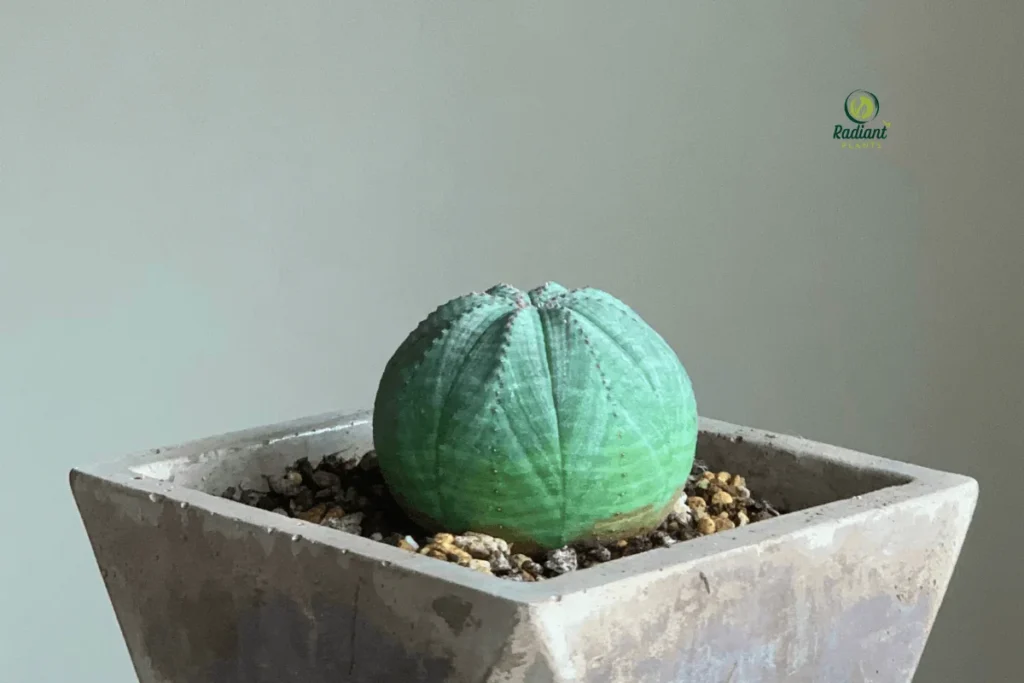
Euphorbia obesa is not just another succulent—it’s a true statement piece. Whether you’re a seasoned succulent collector or a newcomer to the world of plants, its easy care requirements, unique look, and low-maintenance growth pattern make it a wonderful choice. Its resilience to various conditions means it thrives with minimal attention, making it ideal for plant lovers of all experience levels.
With proper care, Euphorbia obesa will continue to be a striking feature in your plant collection for years to come, offering beauty, character, and ease of care all in one perfectly round package.
For more fascinating information about Euphorbia plants, check out this Euphorbia Cactus Plant: 10 Amazing Facts You Must Know.
Care Requirements for Euphorbia obesa Succulent
Euphorbia obesa is a relatively low-maintenance plant, making it an ideal choice for both beginner and experienced gardeners. However, to ensure it thrives and maintains its iconic round shape, there are specific care requirements to keep in mind. Let’s dive into the key aspects of caring for this unique succulent.
Light Requirements
Euphorbia obesa thrives in bright, indirect sunlight, but it can also tolerate direct sunlight. However, too much intense midday sun can cause sunburn or discoloration.
- Optimal Light: Bright, indirect light.
- Tolerance to Direct Sunlight: Can handle morning or late afternoon sun, but harsh midday rays should be avoided to prevent leaf burn.
- Indoor Placement: A sunny windowsill or a bright indoor space is perfect. If you’re growing it indoors, aim to place it near a south-facing window where it can get plenty of natural light.
Watering Euphorbia obesa
Watering is one of the most important aspects of caring for Euphorbia obesa. Like most succulents, this plant is adapted to dry conditions and prefers infrequent, deep watering. Overwatering is a common mistake and can lead to root rot or yellowing leaves.
- Watering Frequency: Water thoroughly when the soil has completely dried out.
- Spring/Summer: Every 7-10 days, depending on the humidity and temperature.
- Fall/Winter: Every 14-21 days, as the plant goes into a dormant period.
- How to Water: Water the plant until it drains from the bottom of the pot. Make sure the soil is well-drained to avoid waterlogged roots.
- Signs of Overwatering: Yellowing or mushy leaves are usually signs of overwatering. If you notice these, reduce watering and allow the soil to dry out completely.
Table: Watering Schedule for Euphorbia obesa
Season | Frequency of Watering | Soil Condition |
|---|---|---|
Spring/Summer | Every 7-10 days | Soil completely dry |
Fall/Winter | Every 14-21 days | Soil completely dry |
Temperature and Humidity
Euphorbia obesa is well-suited to warm, dry climates, so maintaining the right temperature and humidity levels is key to its health.
- Temperature: The ideal temperature range for Euphorbia obesa is between 65°F to 85°F (18°C to 29°C). It can tolerate slightly cooler temperatures but should not be exposed to freezing conditions.
- Humidity: This plant prefers low humidity levels, making it an excellent option for dry indoor environments. High humidity can lead to fungal problems and rot.
- Cold Tolerance: It’s important to keep Euphorbia obesa away from cold drafts or temperatures below 50°F (10°C). In colder climates, it’s best to grow it indoors or bring it inside during winter.
Soil Requirements
Proper soil is essential to keep Euphorbia obesa healthy. It needs well-draining soil to prevent root rot and ensure that water does not accumulate around the roots. A cactus or succulent mix is ideal.
- Soil Type: Well-draining, sandy, or gritty soil.
- pH Level: Slightly acidic to neutral (around 6.0–7.0).
- Additional Soil Amendments: You can add perlite or sand to the soil mix to improve drainage.
Tip: If you are unsure whether your soil mix is well-draining, perform a simple test by watering the plant and checking how quickly the water drains. If it stays wet for more than a few minutes, consider adding more sand or perlite.
Fertilization Needs
Euphorbia obesa is a slow grower and doesn’t require frequent fertilizing. However, occasional feeding during the growing season (spring and summer) can encourage healthy growth and improve its overall appearance.
- Fertilizer Type: Use a balanced, diluted cactus or succulent fertilizer.
- Fertilizing Schedule: Fertilize once a month during the growing season (spring and summer).
- Avoid Over-Fertilizing: Too much fertilizer can harm the plant, causing it to become leggy or discolored. During the dormant months (fall and winter), avoid fertilizing.
Potting and Repotting
Euphorbia obesa does well in a pot that is just large enough for its root system. It’s a slow-growing plant, so frequent repotting is not necessary. However, it should be repotted when it outgrows its current pot or if the soil becomes compacted.
- Pot Size: Choose a pot that allows the plant to grow but isn’t too large. Euphorbia obesa does well when slightly root-bound.
- Repotting Frequency: Every 2-3 years or when the plant becomes root-bound.
- Pot Material: A terracotta or clay pot is ideal because it helps the soil dry out quickly.
Signs of Stress or Poor Health
It’s important to know when Euphorbia obesa is showing signs of stress so you can address any issues promptly.
- Yellowing Leaves: This often indicates overwatering or poor drainage. Cut back on watering and ensure the plant is in well-draining soil.
- Soft or Mushy Spots: These are signs of root rot, usually caused by overwatering. If this occurs, remove the affected parts and allow the plant to dry out for a few days before repotting it in fresh soil.
- Sunburn: If you notice brown or scorched spots on the plant, it could be a sign of too much direct sunlight. Move the plant to a location with more filtered light.
With the right care, Euphorbia obesa can thrive for years and become a unique, low-maintenance feature in your plant collection. By providing it with the appropriate light, watering, temperature, and soil, you’ll ensure that this charming succulent stays healthy and vibrant for many seasons to come.
How to Propagate Euphorbia obesa
Propagating Euphorbia obesa can be a rewarding and easy process, allowing you to grow new plants from an existing one. This succulent can be propagated through seeds or stem cuttings. While propagation from seeds takes longer, stem cuttings are a quicker and more common method for reproducing Euphorbia obesa. Below, we’ll walk through both methods, step-by-step, so you can choose the one that best suits your needs.
Propagating Euphorbia obesa from Cuttings
Propagating from cuttings is the most reliable method for getting a clone of your Euphorbia obesa. It’s relatively easy and produces new plants faster than starting from seeds.
- Step 1: Choose the Right Cutting
Select a healthy, mature Euphorbia obesa plant. Use a sharp, clean knife or pair of scissors to cut a section of the plant. The cutting should be around 2-3 inches (5-7 cm) long and should include the top part of the plant with a few ridges intact. - Step 2: Let the Cutting Callus Over
Euphorbia obesa, like many succulents, exudes a milky sap when cut. This sap can irritate the skin, so it’s important to wear gloves. After taking the cutting, place it in a dry, shaded area for 2-3 days to allow the cut end to callus over. This step helps prevent rotting when the cutting is planted. - Step 3: Prepare the Potting Mix
Use a well-draining soil mix, preferably a cactus or succulent blend. You can also mix sand or perlite with regular potting soil to improve drainage. Fill a small pot with the soil mix. - Step 4: Plant the Cutting
After the cutting has callused, plant the dried end into the prepared soil about 1-2 inches (2.5-5 cm) deep. Press the soil around the base of the cutting to ensure it is stable. - Step 5: Watering the Cutting
Water the cutting lightly, ensuring that the soil is moist but not soaking wet. Overwatering can cause the cutting to rot. Let the soil dry out completely between waterings. - Step 6: Provide Ideal Conditions
Place the potted cutting in a warm location with bright, indirect sunlight. Keep the temperature between 70°F to 80°F (21°C to 27°C). Avoid direct sunlight, as it can scorch the cutting while it’s still rooting. - Step 7: Wait for Roots to Develop
It can take several weeks for roots to develop, but you can check by gently tugging on the cutting to feel if there’s resistance. Once roots have formed, you can treat the cutting like a mature plant and continue with regular care.
Propagating Euphorbia obesa from Seeds
While propagation from seeds takes longer, it’s another method for reproducing Euphorbia obesa, especially if you’re looking to grow multiple plants at once. Here’s how to propagate from seeds:
- Step 1: Harvest or Obtain Seeds
You can collect seeds from an existing Euphorbia obesa plant when the small flowers mature into seeds, but they are often hard to find in indoor settings. You can also purchase seeds from reputable plant nurseries or online sources. - Step 2: Prepare the Seed-Starting Tray or Pot
Use a shallow container or seed tray filled with a well-draining seed-starting mix. A mixture of cactus soil or a standard potting mix combined with perlite works well. Make sure the container has drainage holes to prevent water from accumulating. - Step 3: Plant the Seeds
Sprinkle the seeds evenly across the surface of the soil, but do not cover them with soil. Euphorbia obesa seeds require light to germinate. Gently press them into the soil with a flat tool or your hand. - Step 4: Provide Ideal Germination Conditions
Place the seed tray in a warm area, ideally around 70°F to 75°F (21°C to 24°C). Keep the tray in bright, indirect light, as direct sunlight can dry out the seeds. Ensure the soil remains slightly moist but not wet. - Step 5: Wait for Germination
Germination can take anywhere from a few weeks to several months, depending on the conditions. Be patient and continue to monitor the moisture levels of the soil. Once the seeds have sprouted, allow the seedlings to grow until they are large enough to be transplanted into individual pots.
Common Issues with Propagating Euphorbia obesa
While propagating Euphorbia obesa is generally straightforward, it’s important to be aware of common issues that could affect your success:
- Overwatering: One of the biggest risks when propagating Euphorbia obesa is overwatering. Always let the soil dry out between waterings, and avoid soaking the soil.
- Root Rot: If the cutting or seedlings show signs of mushiness or yellowing, this could be a sign of root rot, usually caused by too much moisture. If this happens, allow the cutting to dry out and restart the process with a new cutting.
- Insufficient Light: Euphorbia obesa needs bright, indirect light to root properly. Without enough light, the cutting may not take root, and seedlings may struggle to grow. Make sure to provide adequate light during the rooting process.
Tips for Successful Propagation
- Be Patient: Whether you’re propagating from cuttings or seeds, Euphorbia obesa is slow to develop, so patience is key. It can take weeks or even months for roots to form and new growth to appear.
- Monitor Temperature: Keep the temperature consistent and warm to encourage rooting. Avoid placing your cuttings or seed tray in areas where the temperature fluctuates drastically.
- Use Sterile Tools: To avoid the risk of introducing disease, always use clean, sterilized tools when cutting and handling the plant. A quick wipe with rubbing alcohol can help sanitize your scissors or knife.
By following these propagation steps, you’ll be able to grow new Euphorbia obesa plants to enjoy or share with others. Whether you’re starting from cuttings or seeds, with a little patience and care, you’ll soon have new plants to admire!
Growth Tips for a Thriving Euphorbia obesa
If you want your Euphorbia obesa to thrive and maintain its signature round shape, there are a few growth tips that will help you cultivate a healthy and robust plant. These simple yet effective strategies will ensure that your succulent not only survives but also flourishes for years to come.
Ensure Proper Drainage for Healthy Growth
Proper drainage is crucial for the healthy growth of Euphorbia obesa. This succulent is highly susceptible to root rot if the soil retains too much water. To promote optimal growth, always make sure that the pot you choose has drainage holes and that the soil is well-draining.
- Choose Well-Draining Soil: A cactus or succulent mix is ideal. You can also amend the soil with perlite or sand to increase drainage.
- Pot with Drainage Holes: A pot that allows excess water to escape will help prevent stagnant water from causing root rot.
Tip: To test if your soil drains well, water the plant and check how quickly the water drains. If the water sits on top for more than a few minutes, you may need to improve the drainage.
Keep a Consistent Watering Schedule
Euphorbia obesa is drought-tolerant but needs a consistent watering schedule to ensure it grows well. The plant’s roots should dry out completely between waterings, but it also requires regular hydration during the growing season.
- Spring and Summer: Water when the top 2-3 inches of soil are dry to the touch. Depending on the environment, watering may be needed every 7-10 days.
- Fall and Winter: Water sparingly, as the plant goes into a dormant phase. Water every 2-3 weeks, only when the soil is completely dry.
Tip: Always check the soil before watering. If it feels damp, wait a few more days before watering again. Overwatering can stunt growth and cause the plant to rot.
Provide Bright, Indirect Light
Light is one of the most critical factors in the growth of Euphorbia obesa. This succulent thrives in bright, indirect sunlight and will not grow well in low-light conditions.
- Best Light Source: Place the plant near a window with bright, indirect light. A south- or east-facing window is usually ideal for optimal growth.
- Avoid Direct Sunburn: While Euphorbia obesa can tolerate some direct sunlight, prolonged exposure to harsh midday sun can scorch the plant’s surface and stunt its growth.
Tip: If growing Euphorbia obesa indoors, consider rotating the plant occasionally so that all sides receive equal light exposure.
Keep the Temperature in the Right Range
Temperature plays a significant role in how well Euphorbia obesa grows. This plant is native to warm, dry climates, and it thrives in temperatures similar to those found in its natural habitat.
- Ideal Temperature: Between 65°F to 85°F (18°C to 29°C).
- Avoid Cold: Do not expose the plant to temperatures below 50°F (10°C), as this can cause the plant to go into shock or die.
Tip: During the winter months, be mindful of cold drafts near windows or air conditioners that could lower the temperature and stress the plant.
Fertilize Sparingly During the Growing Season
While Euphorbia obesa doesn’t require much fertilizer, occasional feeding during the growing season can encourage healthy growth. However, too much fertilizer can lead to leggy growth and an unhealthy plant.
- Fertilizer Type: Use a balanced, diluted cactus or succulent fertilizer. A liquid fertilizer with an NPK ratio of 10-10-10 is ideal.
- Fertilizing Schedule: Feed the plant once a month during the growing season (spring and summer). During the dormant period (fall and winter), reduce or stop fertilizing altogether.
Tip: Always follow the manufacturer’s instructions on the fertilizer packaging to avoid over-fertilizing.
Prune and Maintain the Shape
Although Euphorbia obesa does not require regular pruning, occasional trimming can help maintain its neat, spherical shape and prevent overgrowth. If you notice that the plant is becoming too tall or uneven, you can prune it back.
- Prune During Active Growth: The best time to prune is in the spring or early summer when the plant is actively growing.
- Use Clean Tools: Always use sharp, sanitized pruning shears to prevent spreading any disease.
Tip: Euphorbia obesa can be sensitive to cuts and may exude milky sap when pruned. Wear gloves and clean the cut areas thoroughly to avoid irritation.
Repot When Necessary
Although Euphorbia obesa is a slow-growing plant, it may eventually outgrow its pot or require a soil refresh. Repotting ensures the plant has enough space to grow and access fresh nutrients.
- Signs You Need to Repot: If the plant becomes root-bound or the soil begins to compact and drain poorly, it’s time to repot. This typically happens every 2-3 years.
- Choose the Right Pot Size: Choose a pot that’s just slightly larger than the current one to prevent water from sitting around the roots. Use well-draining soil for repotting.
Tip: When repotting, try to disturb the roots as little as possible to avoid shock.
Protect from Pests and Disease
While Euphorbia obesa is generally resistant to pests and diseases, it’s still important to keep an eye on your plant and watch for any signs of trouble.
- Common Pests: Aphids, mealybugs, and scale insects can sometimes affect Euphorbia obesa. Use an insecticidal soap or neem oil to remove pests if necessary.
- Fungal Issues: Overwatering or high humidity can lead to fungal diseases like root rot or powdery mildew. Avoid overhead watering and ensure good air circulation around the plant.
Tip: Inspect your plant regularly for any pests, and if you notice any issues, treat them promptly to avoid further damage.
By following these growth tips, your Euphorbia obesa will remain healthy, vibrant and continue to grow into a stunning specimen. With the right care and attention, this beautiful succulent will reward you with its unique spherical shape and low-maintenance presence.
Common Problems and How to Fix Them
Despite its low-maintenance nature, Euphorbia obesa can sometimes face a few challenges. Understanding common problems and how to address them will help you keep your succulent healthy and thriving. Below are some of the most common issues with Euphorbia obesa and practical solutions to fix them.
Yellowing or Drooping Leaves
One of the most common signs that something isn’t right with your Euphorbia obesa is yellowing or drooping leaves. This can happen for a variety of reasons, including overwatering, poor drainage, or inconsistent lighting.
- Possible Causes:
- Overwatering: Too much water can cause the roots to rot, leading to yellowing leaves.
- Underwatering: Lack of water can stress the plant, causing it to droop or wilt.
- Insufficient Light: Lack of bright, indirect light can lead to weak growth, causing the plant to droop.
- How to Fix It:
- Check the Soil: Make sure the soil is dry before watering. If the soil is wet, allow it to dry completely before watering again.
- Ensure Proper Drainage: Ensure your pot has drainage holes and that the soil drains well. If needed, repot the plant in a mix designed for succulents or cacti.
- Improve Lighting: Move the plant to a location with more indirect sunlight. Avoid direct sunlight, as it can scorch the plant.
Brown Spots or Soft, Mushy Areas
If you notice brown spots or soft, mushy areas on your Euphorbia obesa, it’s likely a sign of root rot, often caused by overwatering or poor drainage.
- Possible Causes:
- Overwatering: When Euphorbia obesa receives too much water, it can lead to root rot, which causes the plant to develop soft, brown areas.
- Poor Soil Drainage: Soil that retains too much moisture can suffocate the roots and promote rot.
- How to Fix It:
- Inspect the Roots: If the plant has visible brown, mushy areas, gently remove it from the pot and check the roots. Trim away any rotten roots with a clean, sharp knife.
- Repot: If the soil is compacted or not draining well, repot the plant in fresh, well-draining cactus or succulent soil.
- Watering Adjustment: Water only when the soil is completely dry, and ensure the pot has proper drainage to avoid excess moisture buildup.
Leggy Growth
Leggy growth is when your Euphorbia obesa begins to grow tall and thin rather than staying compact and round. This can happen when the plant doesn’t get enough light or is stressed in other ways.
- Possible Causes:
- Inadequate Light: If your Euphorbia obesa isn’t getting enough bright, indirect light, it may stretch toward the light source, causing its growth to become elongated and weak.
- Overfertilization: Excessive fertilizer can cause the plant to grow too quickly, leading to thin, weak stems.
- How to Fix It:
- Provide More Light: Move your Euphorbia obesa to a location where it can receive more bright, indirect sunlight. If indoors, a south or east-facing window is usually ideal.
- Trim Leggy Growth: If the plant has become too leggy, you can prune the elongated stems to encourage a more compact, rounded growth pattern.
- Reduce Fertilization: Fertilize only during the growing season (spring and summer), and use a diluted fertilizer to prevent overgrowth.
Pests and Insects
Although Euphorbia obesa is relatively pest-resistant, it can occasionally fall victim to pests such as aphids, mealybugs, or scale insects. These pests can weaken the plant by sucking the sap, leading to stunted growth.
- Possible Causes:
- Mealybugs or Aphids: These pests tend to congregate on the plant’s leaves and stems, causing yellowing and stunted growth.
- Scale Insects: Scale insects are small, hard to spot, and can often be mistaken for bumps on the plant’s skin. They can cause the plant to weaken and deteriorate.
- How to Fix It:
- Inspect the Plant Regularly: Examine the plant thoroughly for any signs of pests. Look for sticky residue or small white cotton-like masses (mealybugs).
- Neem Oil or Insecticidal Soap: Treat the plant with a natural insecticidal soap or neem oil to eliminate pests. Spray the solution on the affected areas and repeat the treatment as necessary.
- Manual Removal: For scale insects, gently scrape them off with a soft brush or cloth. Use rubbing alcohol to disinfect the plant after removing pests.
Root Bound Euphorbia obesa
As your Euphorbia obesa grows, it may eventually become root-bound, which means the roots fill the entire pot and begin to circle the edges. This can stunt the plant’s growth and affect its overall health.
- Possible Causes:
- Too Small a Pot: If your Euphorbia obesa has outgrown its pot, the roots will struggle to get enough nutrients and water.
- How to Fix It:
- Repot the Plant: Check the roots, and if they are encircling the pot, it’s time to repot the plant into a slightly larger container with fresh, well-draining soil.
- Trim the Roots if Necessary: If the roots are excessively tangled or circling, trim them lightly to encourage new growth and prevent further stress.
Deformed Growth or Cracks
Cracked or deformed growth can occur if the Euphorbia obesa experiences sudden environmental changes, such as a rapid temperature shift, inconsistent watering, or stress from pests.
- Possible Causes:
- Sudden Temperature Changes: If your plant experiences dramatic temperature fluctuations, it can cause the plant to develop cracks or deformities.
- Water Stress: Too much or too little water can also stress the plant, leading to cracks in its body.
- How to Fix It:
- Stabilize the Environment: Keep your Euphorbia obesa in a stable temperature range and avoid sudden temperature fluctuations. Ensure the plant is in a consistent location with proper light and ventilation.
- Water Consistently: Be mindful of your watering schedule, making sure to only water when the soil is completely dry.
By identifying and addressing these common problems early, you can keep your Euphorbia obesa thriving and looking its best. Regular observation and a little attention to its care routine will ensure that this beautiful succulent remains healthy for years to come.
Euphorbia obesa in Indoor and Outdoor Spaces
Euphorbia obesa, with its unique spherical shape, can make a striking addition to both indoor and outdoor spaces. Whether you’re placing it on your windowsill, in your garden, or on your patio, understanding how to integrate this plant into different environments is key to helping it thrive. Below are some essential tips for showcasing Euphorbia obesa in indoor and outdoor spaces.
Growing Euphorbia obesa Indoors
Euphorbia obesa is an excellent choice for indoor spaces due to its low-maintenance nature and compact size. If you’re considering bringing this succulent indoors, here’s how to make it work:
- Lighting Needs: Euphorbia obesa needs plenty of bright, indirect sunlight. Place it near a window with plenty of light, but avoid direct sunlight that could scorch its skin.
- Ideal Location: A south- or east-facing window is perfect for getting the right amount of sunlight. If natural light is limited, consider using a grow light to supplement.
- Temperature Considerations: Indoor environments usually offer a stable temperature range, which suits Euphorbia obesa. Keep the temperature between 65°F to 85°F (18°C to 29°C). Avoid placing it near drafts, heaters, or air conditioners, as temperature fluctuations can stress the plant.
- Potting and Placement: A decorative pot that complements your interior design will also help show off the plant’s unique appearance. Make sure the pot has good drainage to prevent root rot.
- Watering Indoors: Indoor conditions often lead to slower evaporation, so you may not need to water as frequently. Make sure to check the soil before watering and ensure it’s completely dry.
Growing Euphorbia obesa Outdoors
Euphorbia obesa can thrive outdoors, especially in areas that mirror its native climate: hot, dry, and sunny. However, there are a few things to consider when growing it outdoors.
- Climate Requirements: Euphorbia obesa is best suited for USDA hardiness zones 10-11, where the climate is warm and dry. If you live in a cooler zone, you may need to bring it indoors during the winter months or protect it from frost.
- Outdoor Placement: Place the plant in a location that receives plenty of bright, indirect light, such as a patio, balcony, or rock garden. Avoid direct sunlight during the hottest part of the day to prevent sunburn.
- Soil and Drainage: Just like indoors, proper drainage is critical. If you’re planting Euphorbia obesa directly in the ground, make sure the soil is sandy or well-draining. You can amend heavy clay soils with sand or perlite to improve drainage.
- Temperature Protection: Although Euphorbia obesa is heat-tolerant, it does not handle frost well. If you live in an area with occasional freezing temperatures, bring the plant inside or cover it with frost protection during cold spells.
Euphorbia obesa in Containers
Whether indoors or outdoors, Euphorbia obesa looks fantastic in containers. Growing it in a pot or planter allows you to move the plant easily and makes it a versatile choice for any space.
- Container Selection: Choose a pot that has adequate drainage holes to avoid water retention. A clay or terracotta pot works well for Euphorbia obesa because it allows moisture to evaporate more quickly.
- Potting Mix: Use a cactus or succulent mix for optimal drainage. You can also add perlite or sand to your mix to ensure the soil does not hold excess moisture.
- Mobility: Containers are ideal for changing the plant’s location depending on the season. If you’re growing the plant outdoors, consider placing it in a mobile container so you can move it to a protected spot when temperatures drop.
Combining Euphorbia obesa with Other Plants
Euphorbia obesa pairs well with other succulents and drought-tolerant plants, creating a beautiful, low-maintenance display. Here’s how to combine it with other plants in both indoor and outdoor settings:
- Indoor Pairings: Pair Euphorbia obesa with other succulents like aloe vera, Haworthia, or Sedum. These plants share similar care requirements and will complement the round, sculptural form of the Euphorbia.
- Outdoor Pairings: Outdoors, Euphorbia obesa looks stunning in xeriscape gardens or rock gardens. Pair it with other drought-tolerant plants like agave, yucca, or lavender for a striking, desert-inspired look.
- Create Contrast: The rounded form of Euphorbia obesa contrasts beautifully with spiky or tall plants. Consider placing it next to a tall cactus or an ornamental grass to enhance its visual appeal.
Winter Care for Euphorbia obesa Outdoors
In colder climates, winter care is crucial to protect Euphorbia obesa. While this plant can tolerate heat, it’s sensitive to cold and frost.
- Bring It Indoors: If temperatures drop below 50°F (10°C), it’s time to bring your Euphorbia obesa inside. Place it near a window that gets plenty of sunlight.
- Outdoor Protection: If bringing it indoors isn’t an option, cover the plant with frost cloth or blankets to protect it from cold temperatures. Avoid placing the plant near the ground, where it may be exposed to freezing conditions.
Aesthetic Benefits of Euphorbia obesa
Whether grown indoors or outdoors, Euphorbia obesa adds a distinctive, eye-catching element to your space.
- Unique Look: With its ball-shaped structure and segmented, ribbed surface, Euphorbia obesa stands out as an architectural plant. It’s perfect for adding a modern, minimalistic touch to any garden or interior.
- Low Maintenance Beauty: Once established, Euphorbia obesa requires little care, making it an ideal plant for busy individuals who want to add greenery to their spaces without much effort.
By considering the specific needs of Euphorbia obesa for both indoor and outdoor environments, you can create a stunning and thriving space that showcases this fascinating succulent. Whether in a decorative pot inside or as a striking feature in your garden, Euphorbia obesa will enhance your space with its sculptural form and low-maintenance care requirements.
Conclusion
Euphorbia obesa is a unique and captivating succulent that brings beauty and low-maintenance elegance to both indoor and outdoor spaces. With its distinct spherical shape and easy care requirements, this plant is perfect for those looking to add a touch of greenery without the hassle. Whether you’re growing it indoors, outdoors, or in a container, Euphorbia obesa thrives with the right amount of sunlight, well-draining soil, and proper watering practices.
By understanding its care, propagation, and growth tips, you can ensure your Euphorbia obesa remains healthy and vibrant for years to come. Remember, though it’s a resilient plant, regular observation and early intervention for any common issues will keep it thriving. With the right care, Euphorbia obesa will be a standout addition to your plant collection, offering both beauty and ease for plant lovers of all experience levels.
Happy gardening, and enjoy the growth of your stunning Euphorbia obesa!
Frequently Asked Questions (FAQ)
What is Euphorbia obesa?
Euphorbia obesa, commonly known as the Baseball Plant, is a spherical succulent that originates from South Africa. Its unique, rounded shape and segmented ribs make it a popular choice for succulent enthusiasts. It’s known for being low-maintenance, making it perfect for beginner gardeners.
How do I care for Euphorbia obesa?
Euphorbia obesa requires bright, indirect sunlight, well-draining soil, and infrequent watering. It thrives in temperatures between 65°F and 85°F (18°C to 29°C) and should be watered only when the soil is completely dry. Overwatering can lead to root rot, so be sure to allow the soil to dry out between waterings.
Can Euphorbia obesa be grown indoors?
Yes, Euphorbia obesa can thrive indoors. Place it in a spot with bright, indirect sunlight, such as near a south- or east-facing window. Ensure the plant has well-draining soil and a pot with drainage holes to avoid water retention.
How do I propagate Euphorbia obesa?
Euphorbia obesa can be propagated from seeds or by cutting. The most common method is through cuttings, where you remove a healthy segment of the plant, let it callous over for a few days, and then plant it in well-draining soil. Keep it in a warm, bright location and water lightly until roots develop.
What should I do if my Euphorbia obesa is turning yellow?
Yellowing leaves often indicate overwatering or insufficient light. Check the soil to ensure it’s dry before watering, and move the plant to a brighter location if it’s not receiving enough light. Ensure the pot has proper drainage to prevent root rot.
Can Euphorbia obesa be grown outdoors?
Yes, Euphorbia obesa can be grown outdoors in warm climates (USDA zones 10-11). It thrives in well-drained soil and plenty of sunlight. If you live in a region with colder winters, you may need to bring the plant inside during the colder months or protect it from frost.
How do I prevent pests from damaging my Euphorbia obesa?
Euphorbia obesa is generally pest-resistant, but it can sometimes attract mealybugs or aphids. To prevent pests, inspect your plant regularly and remove any visible insects by gently wiping them off with a damp cloth or using an insecticidal soap. Neem oil is also effective for treating pest infestations.
What should I do if my Euphorbia obesa is becoming leggy?
Leggy growth is usually caused by insufficient light. If your Euphorbia obesa is stretching out and becoming thin, move it to a brighter location with more indirect sunlight. Prune any leggy stems to encourage a more compact growth habit.
Can I grow Euphorbia obesa from seeds?
Yes, Euphorbia obesa can be grown from seeds, though this method takes longer than propagation by cutting. Sow seeds in a well-draining soil mix and keep them warm and moist until they germinate. It may take several weeks for the seeds to sprout.
How do I know if my Euphorbia obesa needs to be repotted?
If you notice that your Euphorbia obesa is outgrowing its pot, becoming root-bound, or has roots visible above the soil surface, it’s time to repot. Choose a slightly larger pot with good drainage, and use fresh, well-draining soil to ensure proper growth.
This FAQ section covers the most common queries regarding Euphorbia obesa, helping you troubleshoot any issues and provide the best care for your plant. Keep these tips in mind to ensure a thriving and healthy Euphorbia obesa in your collection!
How to Pollinate #Euphorbia | Obesa & Symmetrica | Male vs. Female Flowers | #Cactus & #Succulents


